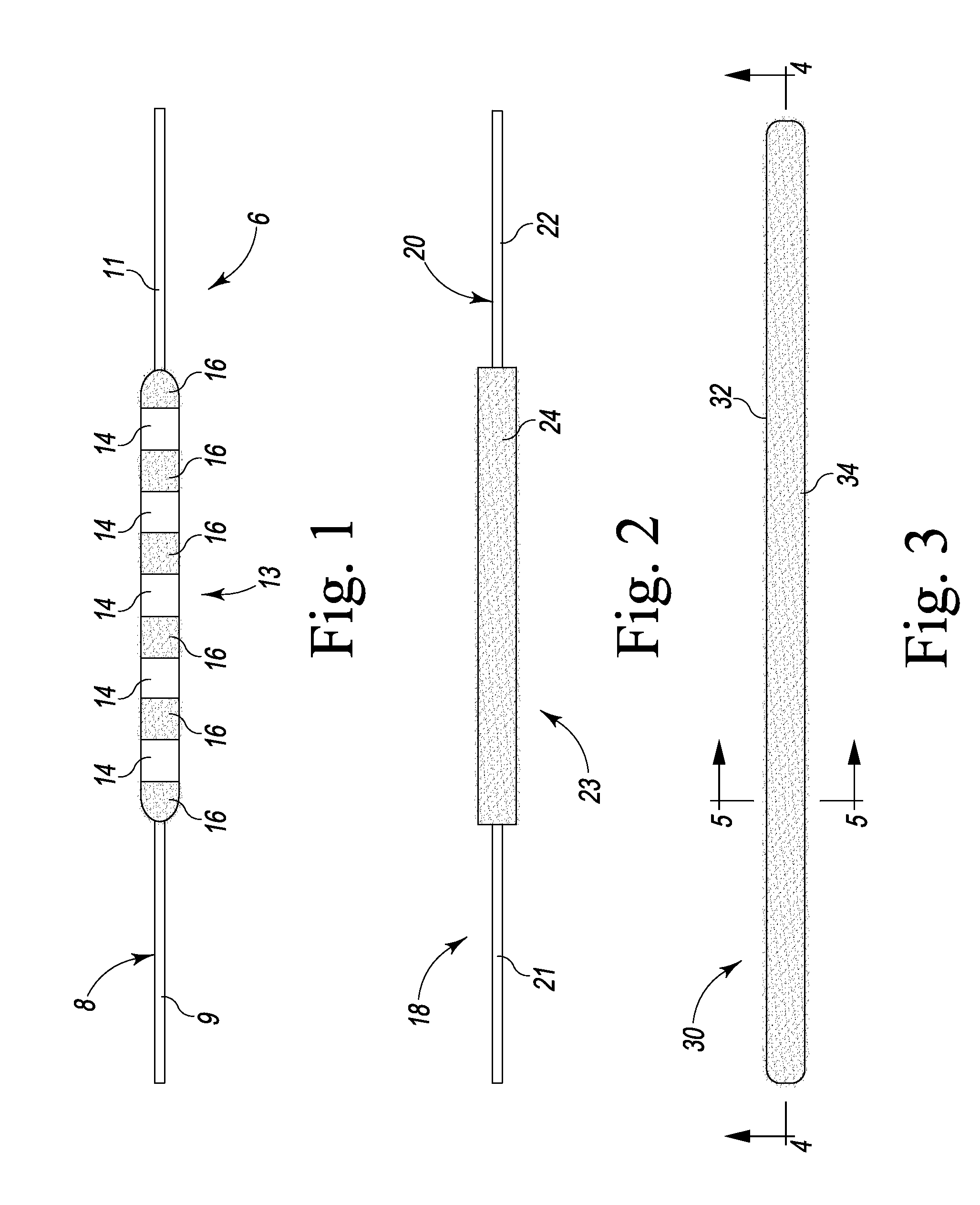Dental Element For Abrading Dental Composite Resin
- Summary
- Abstract
- Description
- Claims
- Application Information
AI Technical Summary
Problems solved by technology
Method used
Image
Examples
Embodiment Construction
Referring to FIG. 1 there is depicted an exemplary embodiment of a dental element and particularly, there a piece or strand of dental abrading, finishing, polishing and / or sanding floss (collectively, dental abrading floss), generally designated 6, fashioned in accordance with the present principles for abrading dental composite resin. The dental abrading floss 6 is defined by a length of dental floss 8 that is made from a fiber or fibrous material (collectively, fiber) that is preferably, but not necessarily, man-made or synthetic such as, but not limited to, nylon, rayon, Gore-tex® or the like. As such, the length of dental floss 8 may be a continuous length of thread, strand, piece or the like or an individual piece thereof of any length.
The length of dental floss 8 has a circular cross section throughout its entire length and an abrasion or abrading section 13 situated between a first lateral length 9 and a second lateral length 11 each of which do not have any abrasive material...
PUM
 Login to View More
Login to View More Abstract
Description
Claims
Application Information
 Login to View More
Login to View More - R&D
- Intellectual Property
- Life Sciences
- Materials
- Tech Scout
- Unparalleled Data Quality
- Higher Quality Content
- 60% Fewer Hallucinations
Browse by: Latest US Patents, China's latest patents, Technical Efficacy Thesaurus, Application Domain, Technology Topic, Popular Technical Reports.
© 2025 PatSnap. All rights reserved.Legal|Privacy policy|Modern Slavery Act Transparency Statement|Sitemap|About US| Contact US: help@patsnap.com



